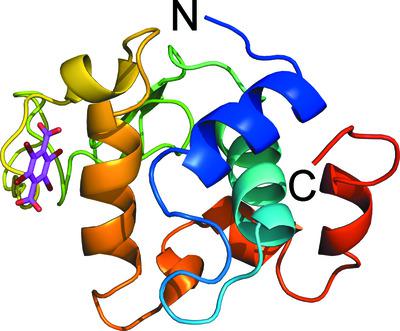当前位置:
X-MOL 学术
›
Acta Cryst. F
›
论文详情
Our official English website, www.x-mol.net, welcomes your
feedback! (Note: you will need to create a separate account there.)
Simplified heavy‐atom derivatization of protein structures via co‐crystallization with the MAD tetragon tetrabromoterephthalic acid
Acta Crystallographica Section F ( IF 1.1 ) Pub Date : 2021-05-05 , DOI: 10.1107/s2053230x21004052 Jia Q Truong 1 , Stephanie Nguyen 2 , John B Bruning 2 , Keith E Shearwin 1
Acta Crystallographica Section F ( IF 1.1 ) Pub Date : 2021-05-05 , DOI: 10.1107/s2053230x21004052 Jia Q Truong 1 , Stephanie Nguyen 2 , John B Bruning 2 , Keith E Shearwin 1
Affiliation

|
The phase problem is a persistent bottleneck that impedes the structure‐determination pipeline and must be solved to obtain atomic resolution crystal structures of macromolecules. Although molecular replacement has become the predominant method of solving the phase problem, many scenarios still exist in which experimental phasing is needed. Here, a proof‐of‐concept study is presented that shows the efficacy of using tetrabromoterephthalic acid (B4C) as an experimental phasing compound. Incorporating B4C into the crystal lattice using co‐crystallization, the crystal structure of hen egg‐white lysozyme was solved using MAD phasing. The strong anomalous signal generated by its four Br atoms coupled with its compatibility with commonly used crystallization reagents render B4C an effective experimental phasing compound that can be used to overcome the phase problem.
中文翻译:

通过与 MAD 四方四溴对苯二甲酸共结晶简化蛋白质结构的重原子衍生化
相位问题是阻碍结构测定流程的持续瓶颈,必须解决它才能获得大分子的原子分辨率晶体结构。尽管分子置换已成为解决相位问题的主要方法,但仍然存在许多需要实验定相的情况。在此,提出了一项概念验证研究,显示使用四溴对苯二甲酸 (B4C) 作为实验定相化合物的功效。通过共结晶将 B4C 纳入晶格,并使用 MAD 定相解析了鸡蛋清溶菌酶的晶体结构。B4C 的四个 Br 原子产生的强烈异常信号,加上它与常用结晶试剂的兼容性,使 B4C 成为一种有效的实验相化合物,可用于克服相问题。
更新日期:2021-05-05
中文翻译:

通过与 MAD 四方四溴对苯二甲酸共结晶简化蛋白质结构的重原子衍生化
相位问题是阻碍结构测定流程的持续瓶颈,必须解决它才能获得大分子的原子分辨率晶体结构。尽管分子置换已成为解决相位问题的主要方法,但仍然存在许多需要实验定相的情况。在此,提出了一项概念验证研究,显示使用四溴对苯二甲酸 (B4C) 作为实验定相化合物的功效。通过共结晶将 B4C 纳入晶格,并使用 MAD 定相解析了鸡蛋清溶菌酶的晶体结构。B4C 的四个 Br 原子产生的强烈异常信号,加上它与常用结晶试剂的兼容性,使 B4C 成为一种有效的实验相化合物,可用于克服相问题。











































 京公网安备 11010802027423号
京公网安备 11010802027423号